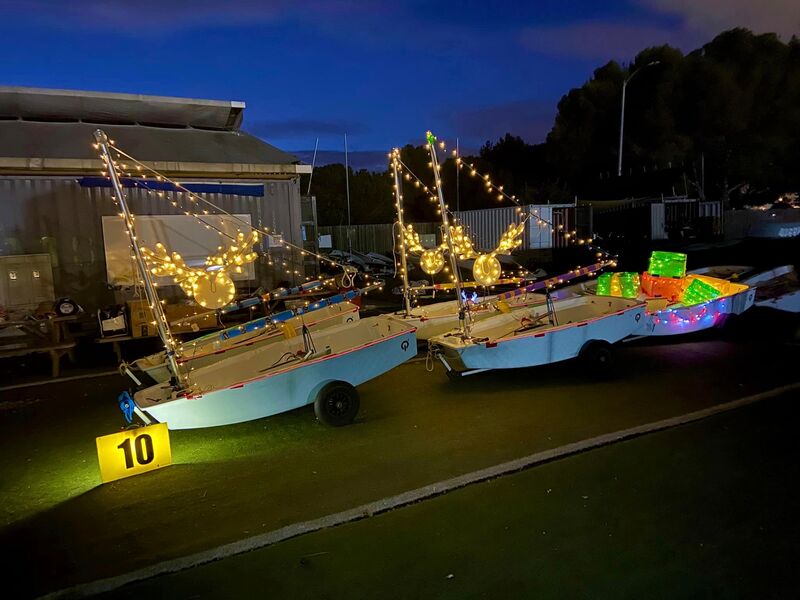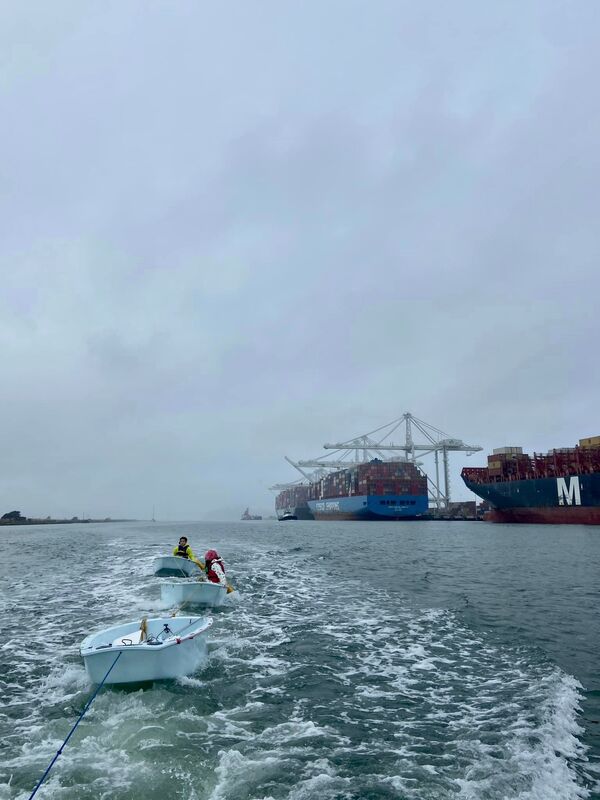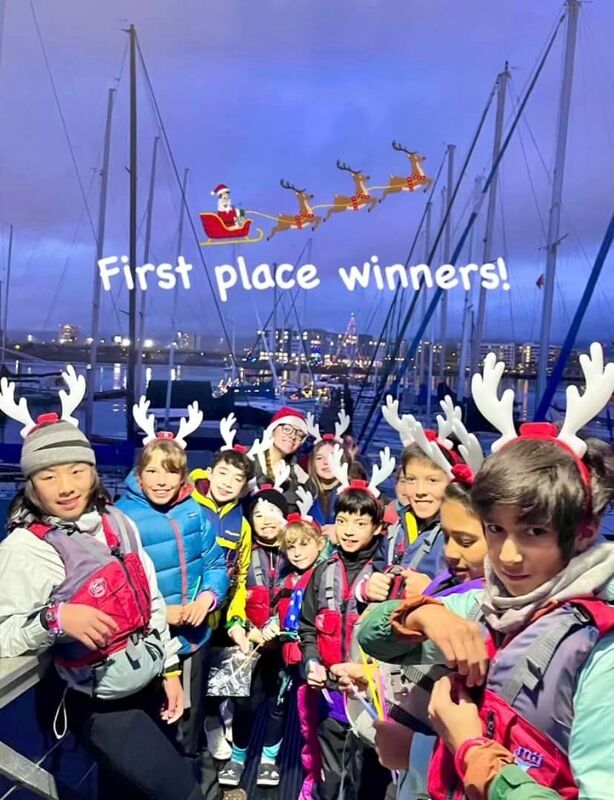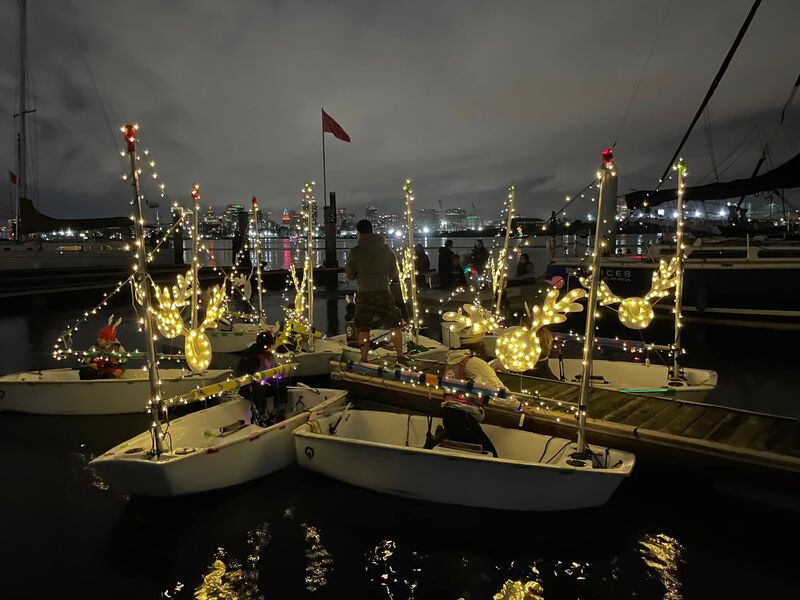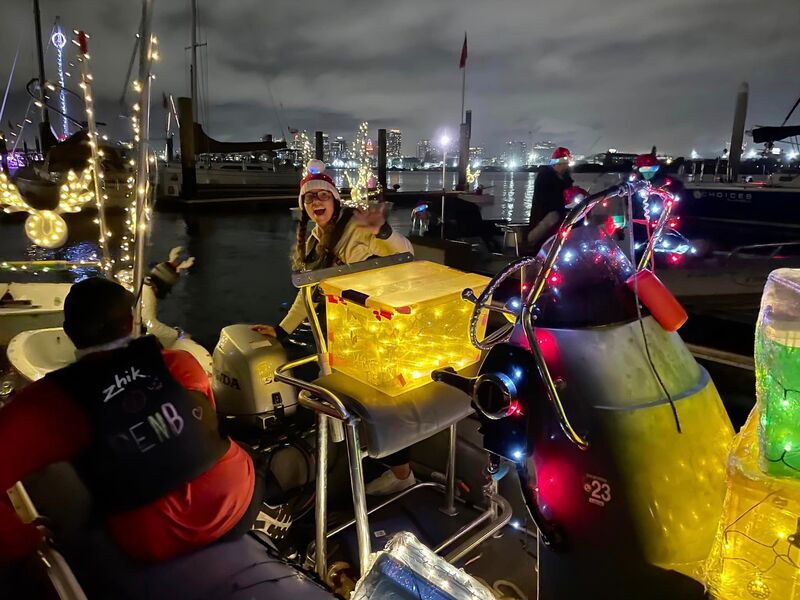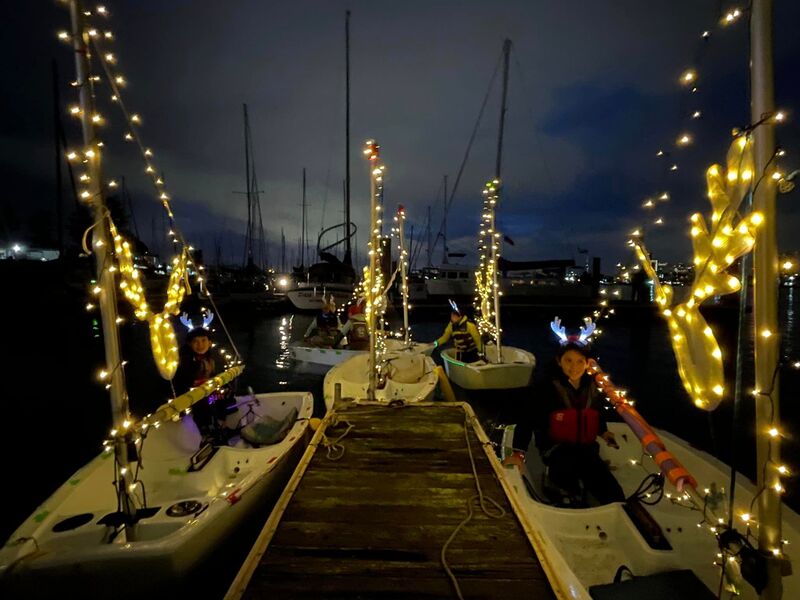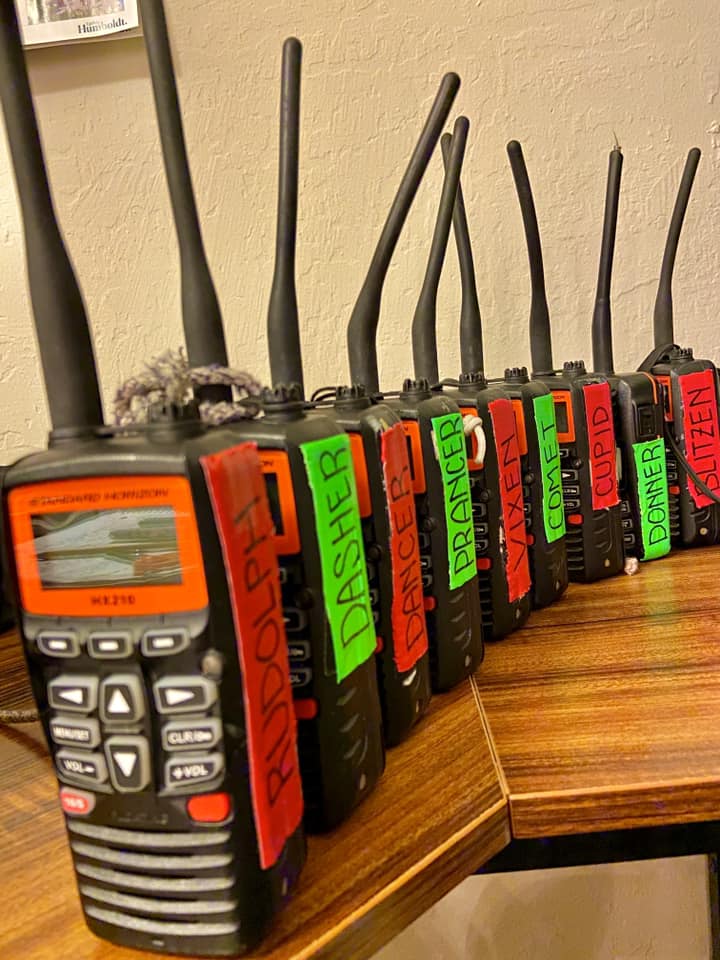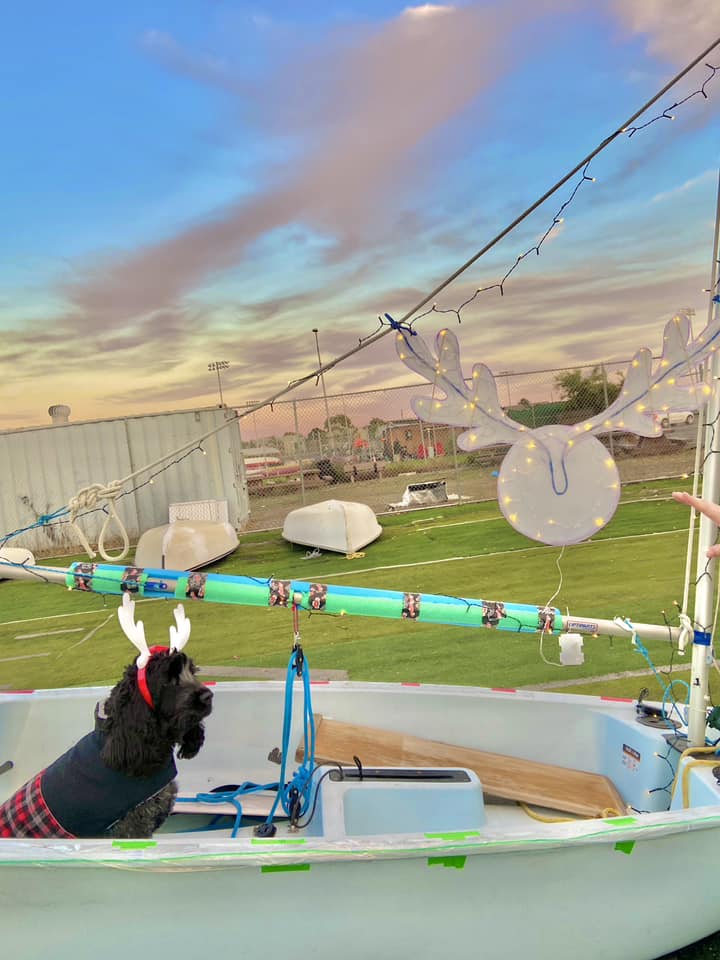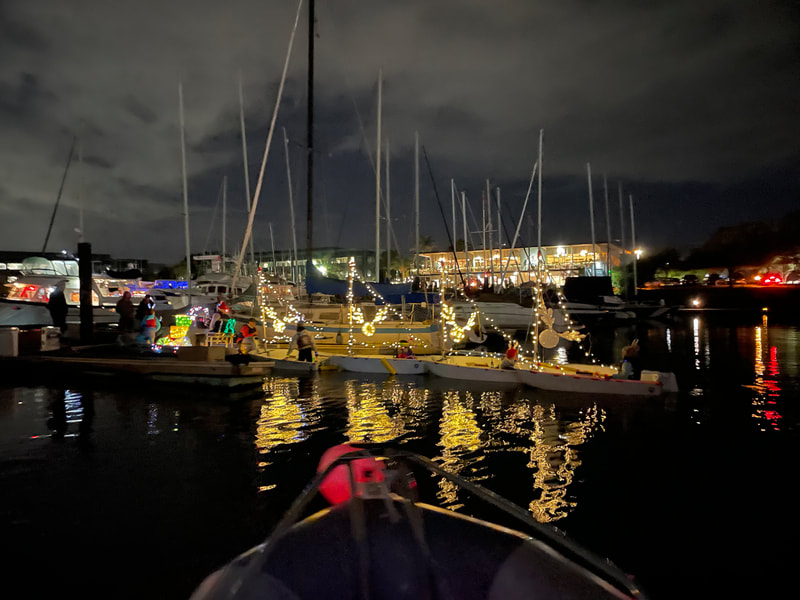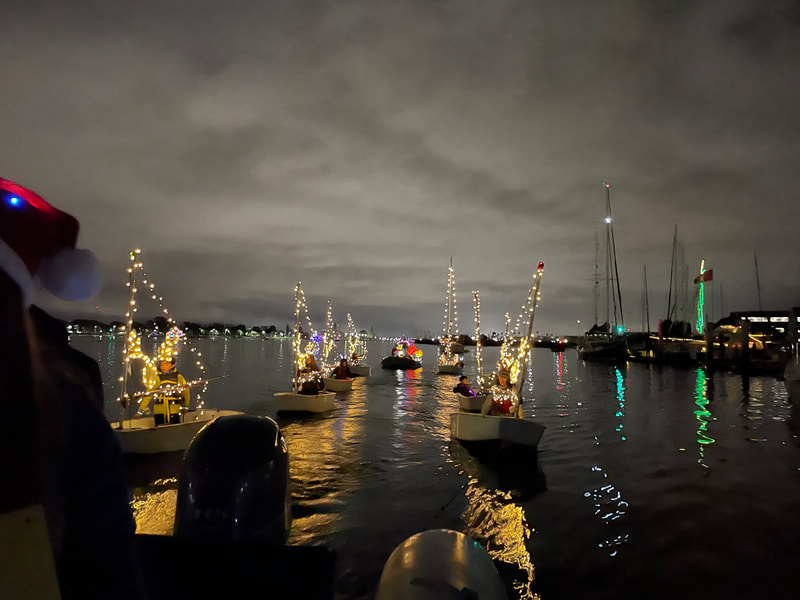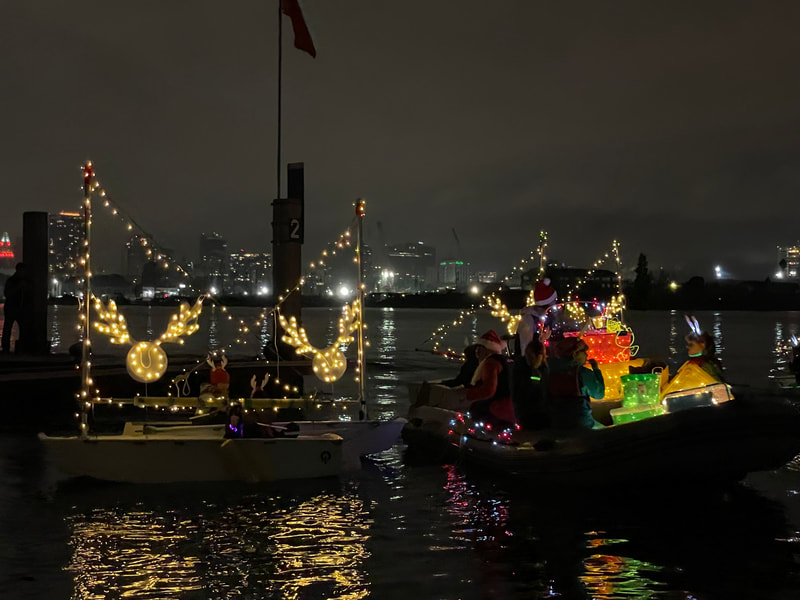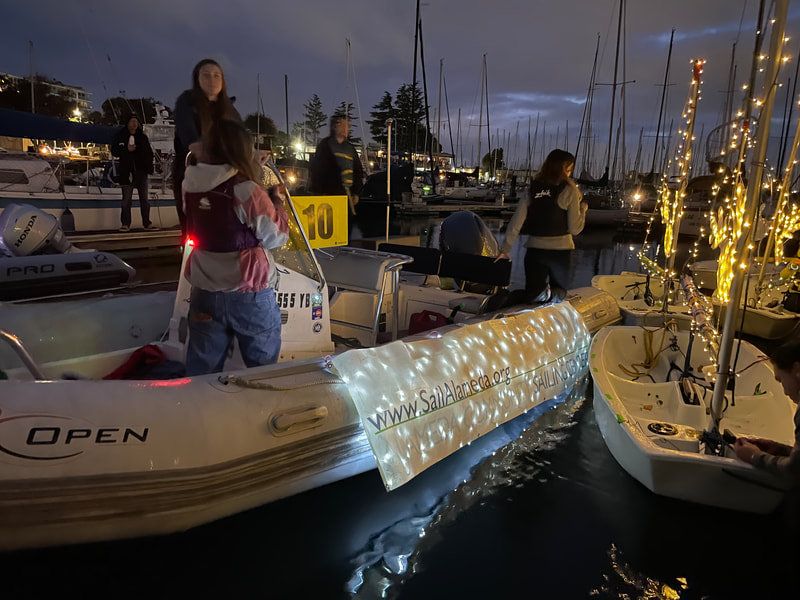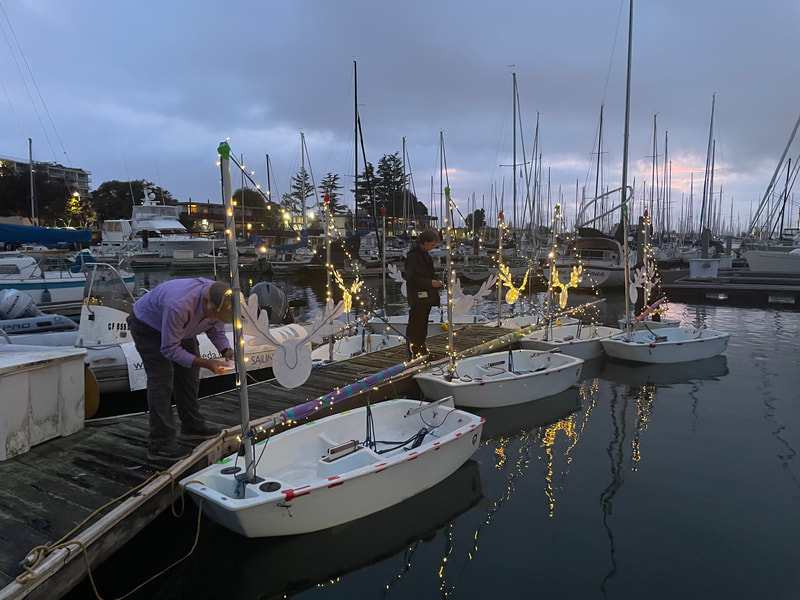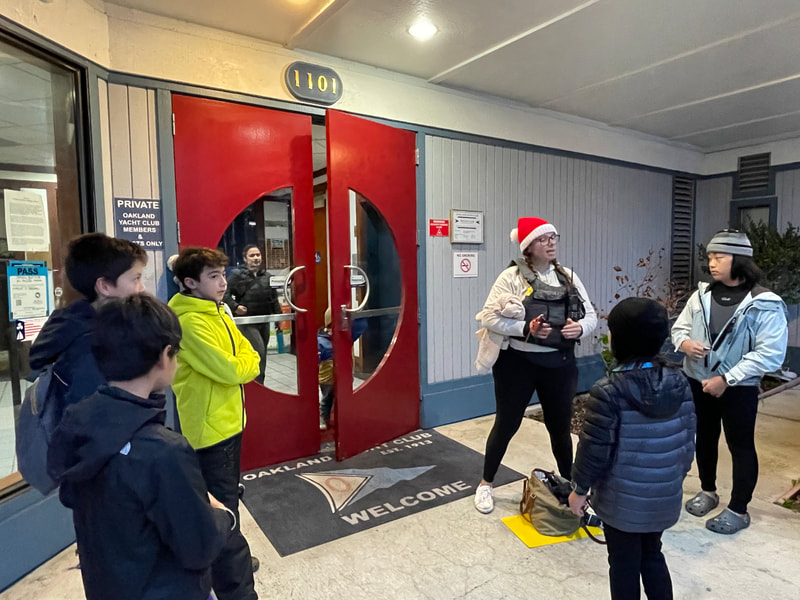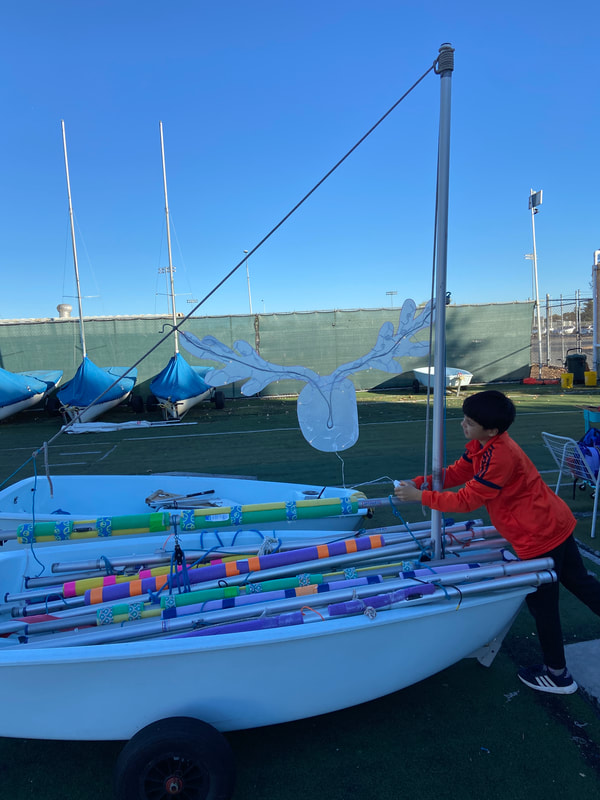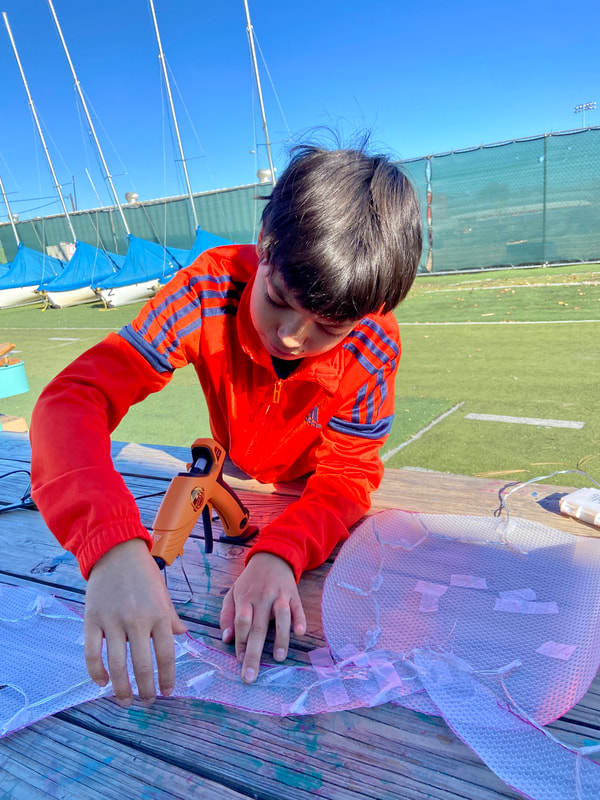|
It's time to round up the 2024 crew! ACSC is now hiring Sailing Instructors, a Lead Instructor, and for the first time ever, an Assistant Director! Check out the job description for our newest position here:
0 Comments
For the first time ever, ACSC joined in the Lighted Yacht Parade hosted by Encinal and Oakland Yacht Clubs. It was a merry and bright experience for ACSC sailors, staff, and volunteers. We're already excited for next year's parade!
For ACSC’s inaugural parade float, “Big Zod,” our biggest Zodiac powerboat led the way as red-nosed Rudolph, crewed by ACSC Counselors-in-Training, Assistant Instructors, and Instructors. Next, Dasher, Dancer, Prancer, Vixen, Comet, Cupid, Donner, and Blitzen were represented by Seasoned Sailors in Sail Cubes. Towed by the reindeer was Santa’s sleigh with Santa Claus, Mrs. Claus, and 3 elves, played by an Assistant Instructor, Program Director, and Seasoned Sailors. Leaving the North Pole was a BIG project, and Santa had MANY helpers… Youth Sailors, Volunteers, Staff Members, Dry Storage Members, and Board Members ALL worked together to make holiday magic happen. Youth sailors helped design and create reindeer cutouts. Dry Storage members, staff, and volunteers rigged Sail Cube masts and booms with battery-powered string lights. Sailors, staff, Dry Storage members, transported the whole thing to and from ACSC’s South Bay-facing side of the island around to the northern estuary side of the island. Some boats traveled via water and some via land. Most impressively, the whole operation was a volunteer project! The holiday spirit powered our parade entry. And it paid off! We won first place in our division– the “Other” boat category. More importantly, everyone was full of merriment and joy parading up and down the estuary, singing holiday songs, and shaking their jingle bells. ACSC owes a big HO HO HO to Oakland Yacht Club, our home away from home. There the “reindeer” slept soundly after the magical event, and families of “reindeer” were able to view the parade. Thank you to Oakland Yacht Club and Encinal Yacht Club for hosting a wonderful holiday festivity that we hope to make an annual ACSC tradition. |
||||||
Services |
ACSC Info |
|

 RSS Feed
RSS Feed

